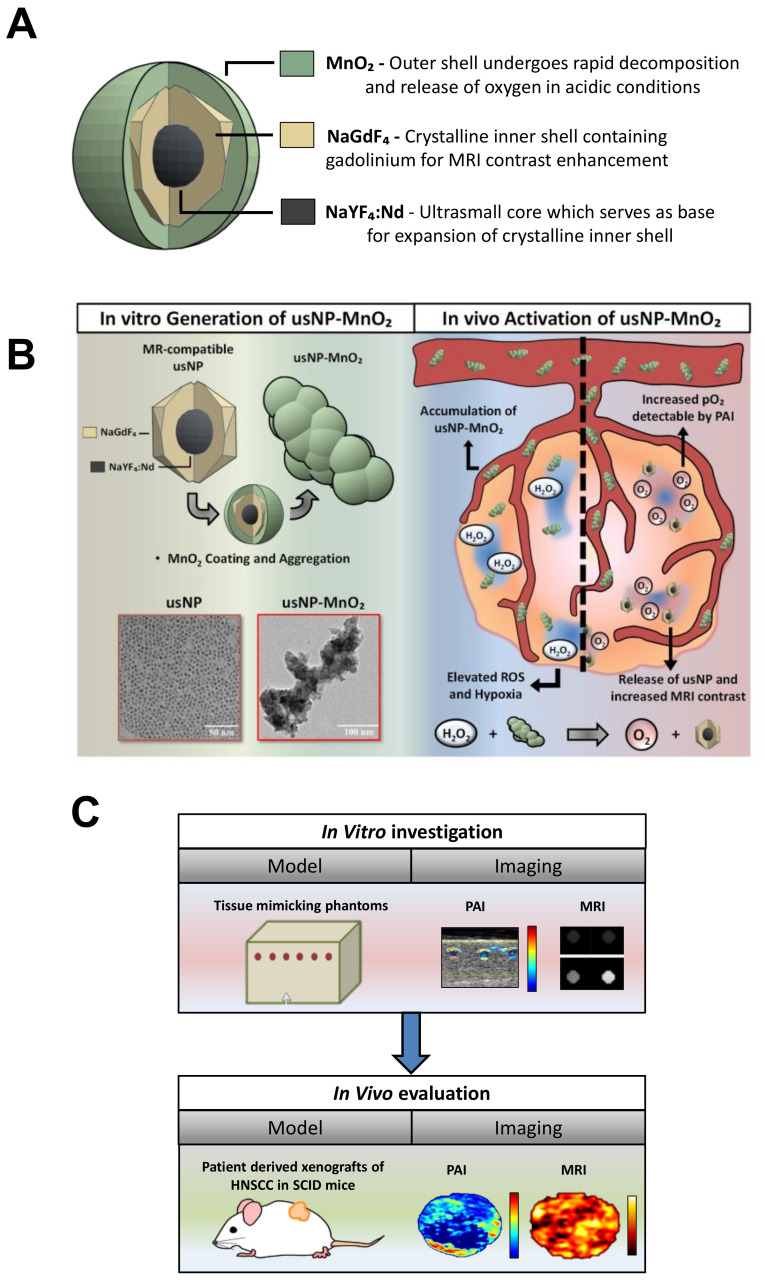Figure 1.
Photoacoustic and magnetic resonance (MR) imaging of hybrid manganese dioxide-coated ultra-small NaGdF4 nanoparticles for spatiotemporal modulation of hypoxia in head and neck cancer. (A) usNP-MnO2 composed of NaYF4:Nd3+/NaGdF4 nanocrystals coated with manganese dioxide were designed and synthesized for evaluation. (B) The hybrid nanoparticles have the potential to modulate tumor oxygenation by generating oxygen in the presence of reactive oxygen species (H2O2) within the tumor microenvironment. Areas of hypoxia (blue regions) within the tumor microenvironment are known to have lower pH and accumulation of reductive species such as H2O2. Under these conditions, usNP-MnO2 will accumulate and undergo a redox reaction to release O2 and free usNP, increasing pO2 detectable by PAI and allowing for MRI detection of usNP. (C) Photoacoustic and MR imaging was performed to assess the imaging properties and the ability of usNP-MnO2 to modulate hypoxia in vitro, using vascular channel phantoms, and in vivo, using patient derived xenograft models of head and neck squamous cell carcinoma (HNSCC).

